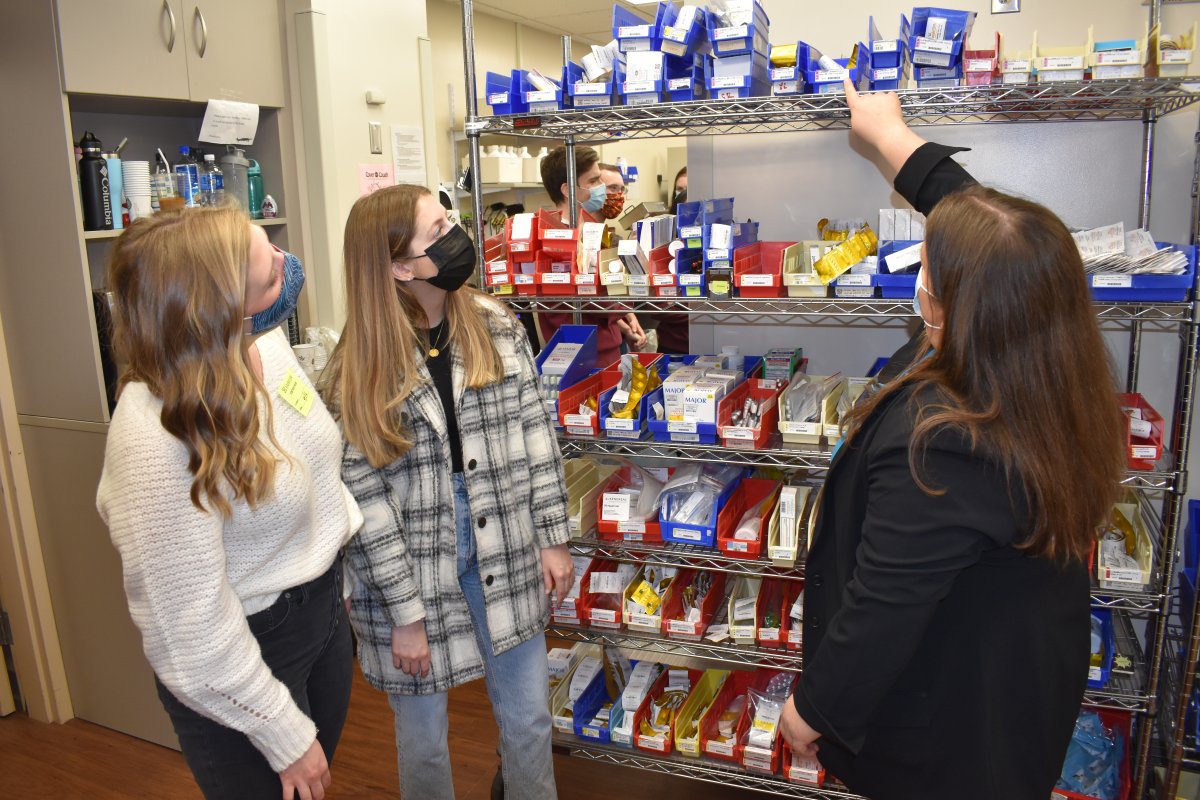Seniors Modernize a University Pharmacy

Bottom: Seniors Britta Gantert (left) and Jill Litos (middle) reviewing the current inventory management system.
For their senior design project, a group of ISyE students assisted the University of Minnesota Medical Center in its pharmacy redesign.
Thirteen organizations with a mix of local and global operations sponsored 17 senior design projects this spring 2021 semester. Project teams of four to five seniors worked to address important issues affecting these businesses—from distribution center redesigns to planning the distribution of COVID-19 vaccines. Teams worked closely with their sponsors to collect data, develop models, perform analysis and, in certain cases, conduct site visits. The work they completed provided their sponsors with fresh perspectives and insights. Simultaneously, students practiced hands-on approaches to solving problems in a real-world setting.
One group worked with the University of Minnesota Medical Center (UMMC) to help transition its pharmacy on the East Bank campus from a manual inventory management system to an automated carousel system.
UMMC faced several shortfalls due to its older system. The on-hand inventory of medications were not being tracked and a lack of storage space led to a high volume of expired medications. Furthermore, the manual workflows to restock medication bins and fill prescriptions were time-consuming, slowing down the pharmacy’s operations. Seniors Drew Bennett, Ying Xin Cheh, Zach Drew, Britta Gantert, and Jill Litos developed a solution they believed would create a more efficient operation process for UMMC, while also saving them money.
The group started by devising a min-max inventory model. Using this model, UMMC could determine a more accurate timing and quantity for individual medication re-orders. Switching to this model can shrink UMMC’s on-hand inventory by at least 10 percent, the group found, as well as save at least $195,000 each year. Additionally, the group outlined a plan for organizing the more than 2,000 medications held in UMMC’s East Bank pharmacy. Aside from assorting medications into alphabetical clusters, the group developed an optimization model that prioritizes fast-moving medications in the first few rows of the carousel and placing commonly used medications near each other. The group simulated this new system and found it improved workflows by reducing the maximum processing time by more than two hours for batch orders.
Other senior design teams developed improved medical clinic check-in process flows, optimized shared workspace layouts, and global supply chain risk mitigation plans, among others. Whether the work was performed on-site with safety precautions due to the COVID-19 pandemic, or was performed remotely, the teams provided novel industrial engineering solutions with lasting value to their sponsors.